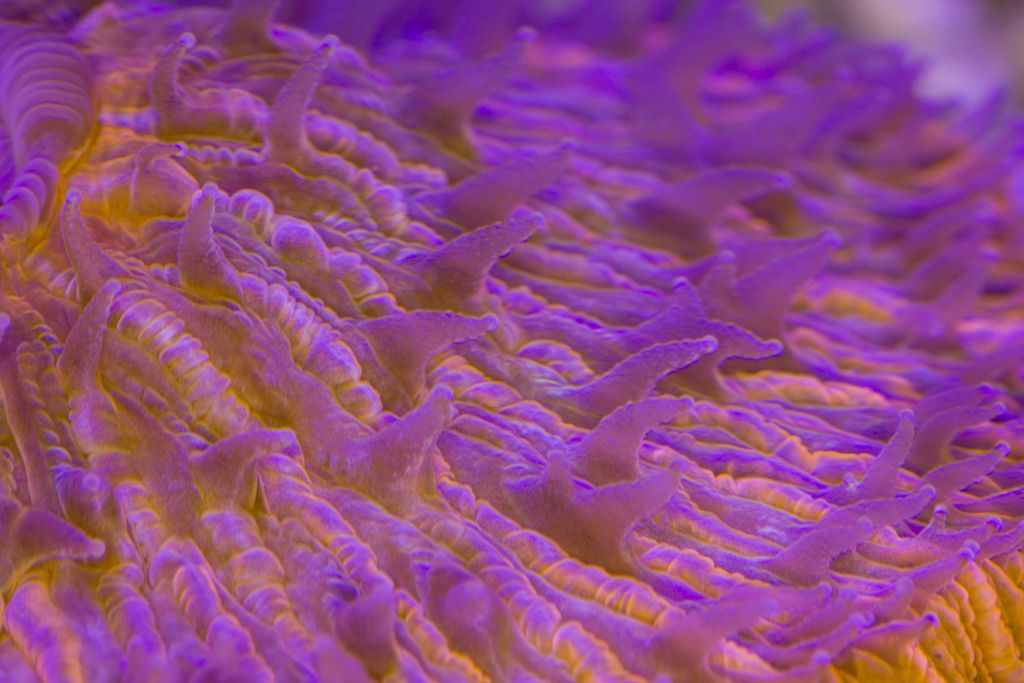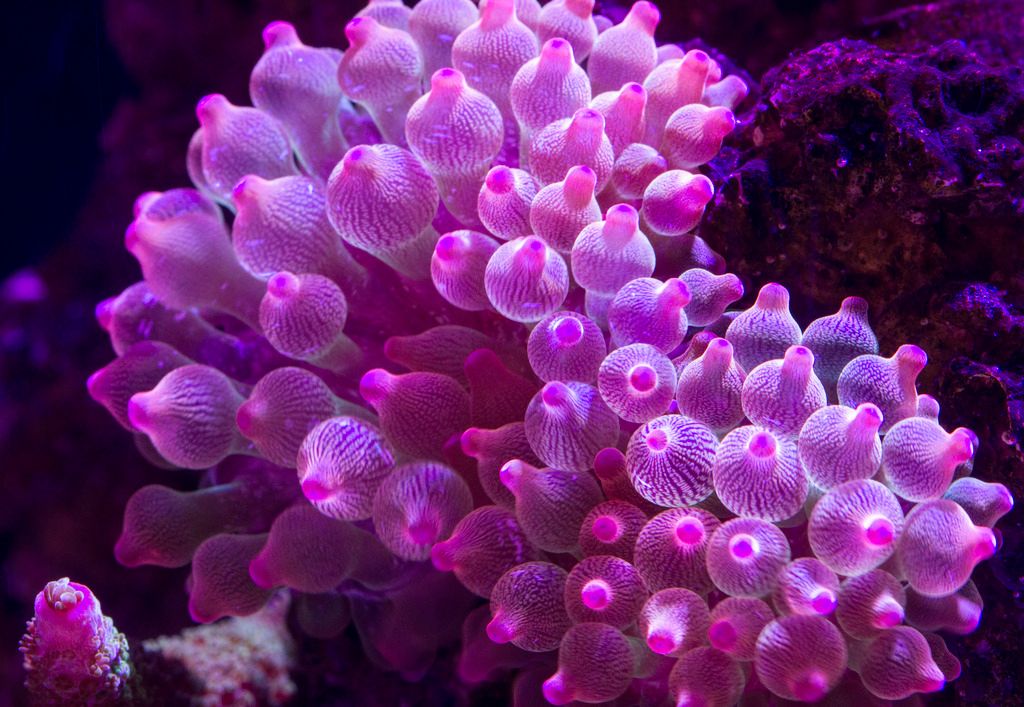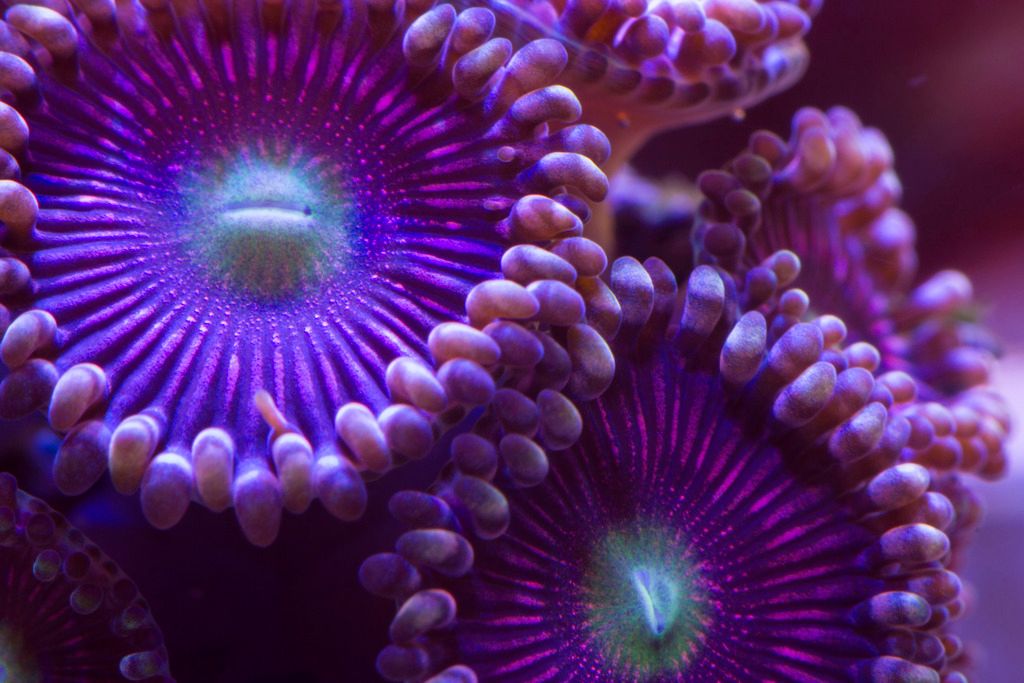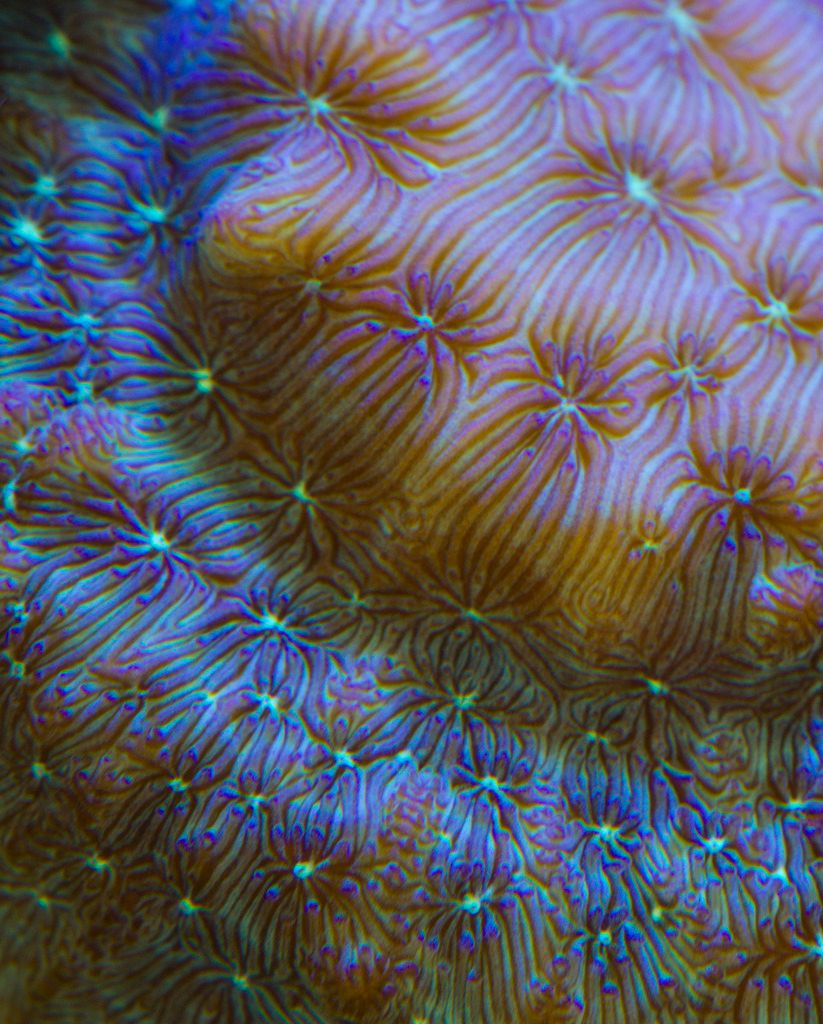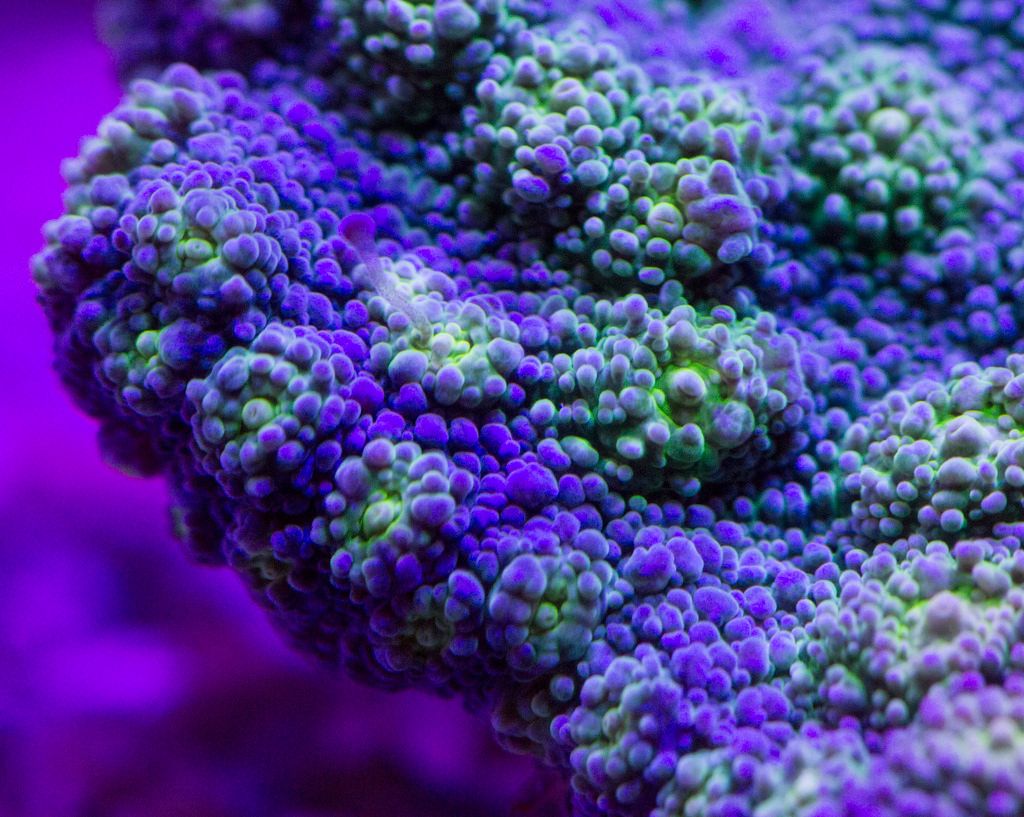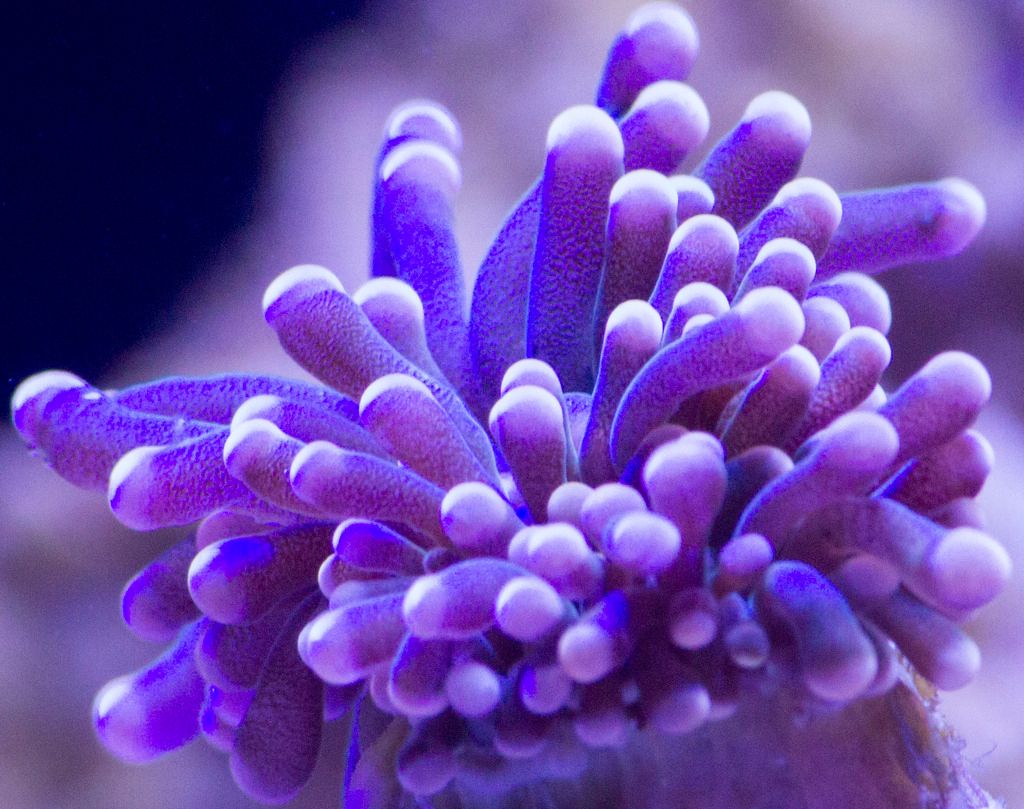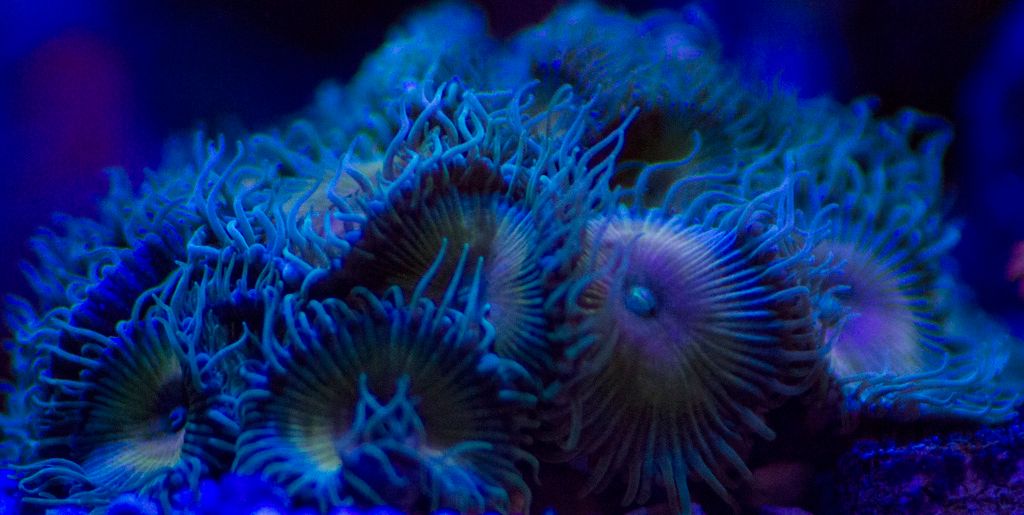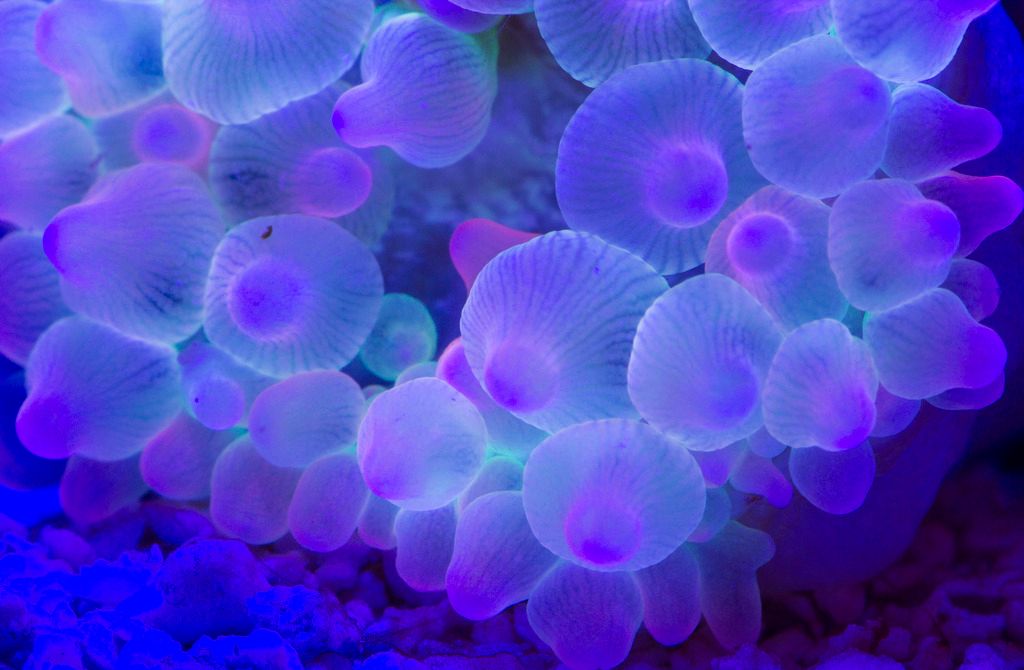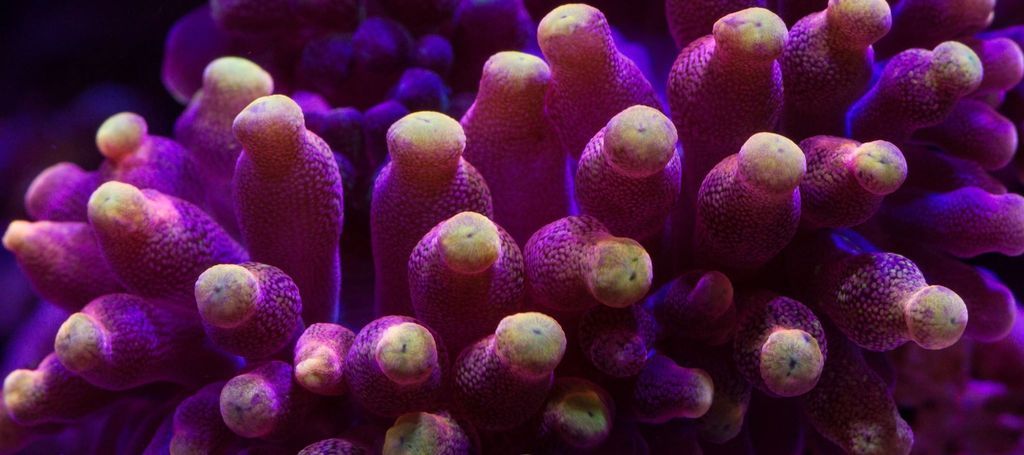- Joined
- Jan 30, 2015
- Location
- Toronto, Ontario
My two main tanks are Innovative Marine Fusion 10 + 20 gallons, un-sumped. I really love the look of the tanks and they are especially suitable for an apartment. While originally I felt this really limited what I could do with the filtration and thus limiting what I could keep, I have heavily modified both tanks to accomplish my goals. I am able to keep a wide variety of fish and any type of coral, and my filtration has been modified so that my tank maintenance is very minimal at this point. Before the modifications the tank required far too much maintenance, and I felt the filtration was inadequate even at a very low bio-load. I also started culturing my own live food in the hopes of reducing feeding produced food that contributes to tank pollution.
The Fusion 20 is my main tank. The live rock is almost totally covered with a wide variety of corals, and the sand is getting full of them. My livestock include a pair of Mandarins, a Wyoming White Clownfish, a Griessingeri Goby and a new addition of an extremely juvenile Cherub Angelfish. There are currently 5 Anemones in the tank.
Equipment:
Apex Jr Controller
InTank Media Basket - Filter floss, poly-pad, Chemipure Blue
InTank Media Basket 2 - Cheato-filled refugium
Refugium light - 8w 72000k LED
50w Eheim Jager Heater
IM Reactor - Carbon
IM Desktop Ghost Skimmer
Maxi-Jet 1200 Return pump
2 IM Spinstream
Vortech MP10
Ecotech XR15 Pro
ATO
The Fusion 10 has become a frag tank. It currently has no rock in the entire system, only a 2" deep sandbed. It has a few Gressingeri Gobies and a Spotted Mandarin in it.
Equipment:
Apex EB4
IM Media Basket - Filter floss, poly-pad, Chemipure Blue
InTank Refugium Basket 2 - Cheato-filled refugium - carbon
Refugium light - 8w 72000k LED
Koralia 240 Pump
IM Spinstream
Vortech MP10
PAR38 Full Spectrum LED
I am learning photography and have learned to take coral shots, but I still have some work to do on a full tank shot, so I will get those up shortly.
My 3rd tank is not a reef tank, but it used to be. It is currently being used to grow macro-algae and is kept without fish or coral to allow all kinds of zooplankton to reproduce freely. There are amphipods 1/4 inch long on the glass, as well as a ton of copepods and rotifers. I customized it to be almost entirely maintenance free, and can be easily used as a reef tank. The tank is extremely simple, and runs itself as the low-flow refugium feeds the tank and the low bioload ensures that it is virtually maintenance free.
Fluval Edge 6 gallon
Hood lights converted to Ultrabrite LED 50/50 white/actinic
Filtration: 0.6 gallon custom HOB filter/refugium (made with Marina breeding box). Divided into two compartments, the first 1/3 is mechanical/chemical filtration with filter floss, polypad and chemipure, the other 2/3 is a chaeto-filled refugium. The hood has been modified to cover the filtration. The filter is fed by a small submersible sponge filter.
The Fusion 20 is my main tank. The live rock is almost totally covered with a wide variety of corals, and the sand is getting full of them. My livestock include a pair of Mandarins, a Wyoming White Clownfish, a Griessingeri Goby and a new addition of an extremely juvenile Cherub Angelfish. There are currently 5 Anemones in the tank.
Equipment:
Apex Jr Controller
InTank Media Basket - Filter floss, poly-pad, Chemipure Blue
InTank Media Basket 2 - Cheato-filled refugium
Refugium light - 8w 72000k LED
50w Eheim Jager Heater
IM Reactor - Carbon
IM Desktop Ghost Skimmer
Maxi-Jet 1200 Return pump
2 IM Spinstream
Vortech MP10
Ecotech XR15 Pro
ATO
The Fusion 10 has become a frag tank. It currently has no rock in the entire system, only a 2" deep sandbed. It has a few Gressingeri Gobies and a Spotted Mandarin in it.
Equipment:
Apex EB4
IM Media Basket - Filter floss, poly-pad, Chemipure Blue
InTank Refugium Basket 2 - Cheato-filled refugium - carbon
Refugium light - 8w 72000k LED
Koralia 240 Pump
IM Spinstream
Vortech MP10
PAR38 Full Spectrum LED
I am learning photography and have learned to take coral shots, but I still have some work to do on a full tank shot, so I will get those up shortly.
My 3rd tank is not a reef tank, but it used to be. It is currently being used to grow macro-algae and is kept without fish or coral to allow all kinds of zooplankton to reproduce freely. There are amphipods 1/4 inch long on the glass, as well as a ton of copepods and rotifers. I customized it to be almost entirely maintenance free, and can be easily used as a reef tank. The tank is extremely simple, and runs itself as the low-flow refugium feeds the tank and the low bioload ensures that it is virtually maintenance free.
Fluval Edge 6 gallon
Hood lights converted to Ultrabrite LED 50/50 white/actinic
Filtration: 0.6 gallon custom HOB filter/refugium (made with Marina breeding box). Divided into two compartments, the first 1/3 is mechanical/chemical filtration with filter floss, polypad and chemipure, the other 2/3 is a chaeto-filled refugium. The hood has been modified to cover the filtration. The filter is fed by a small submersible sponge filter.
Last edited:

